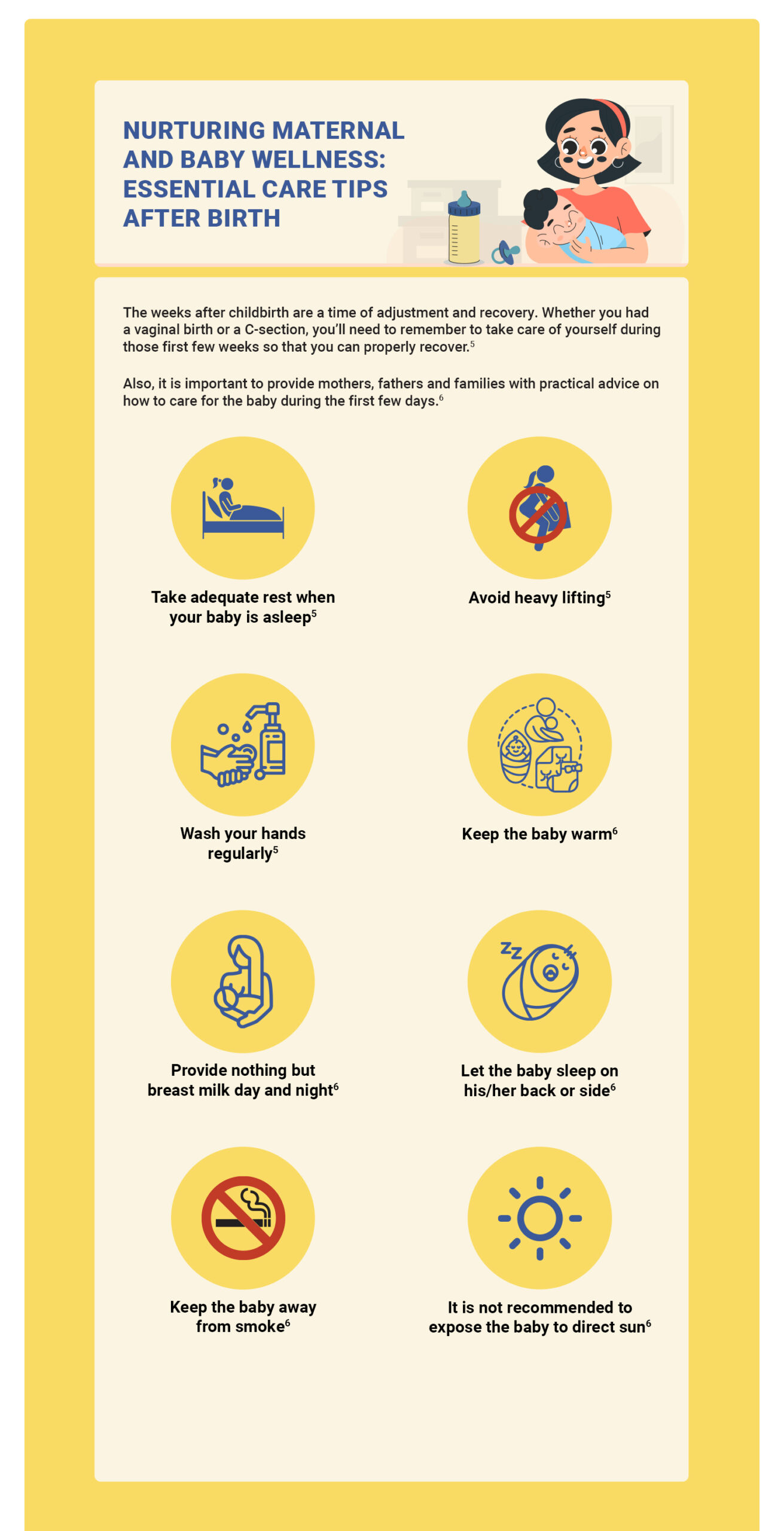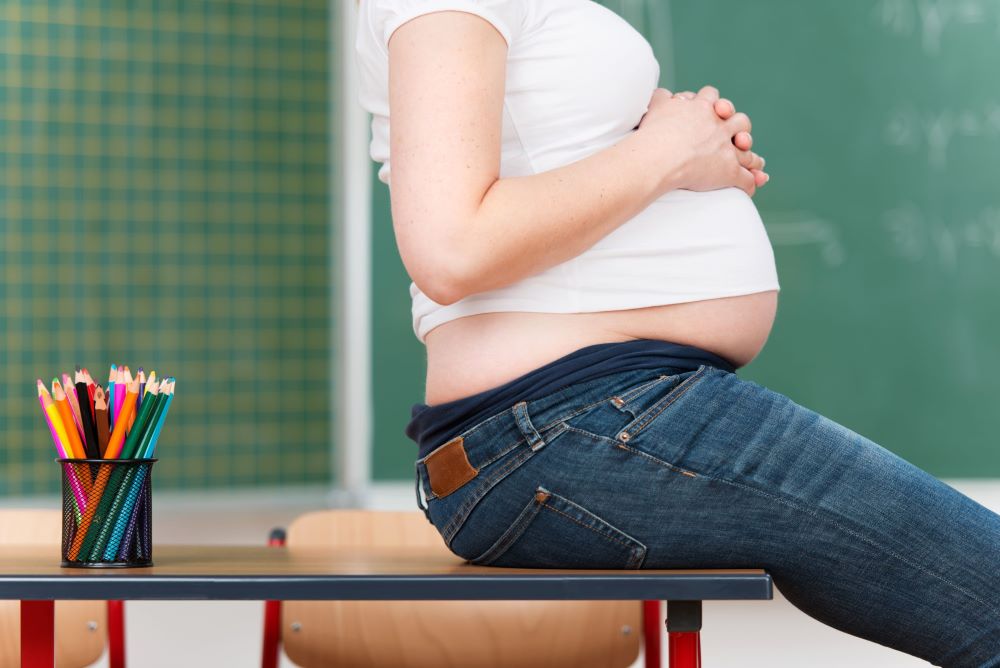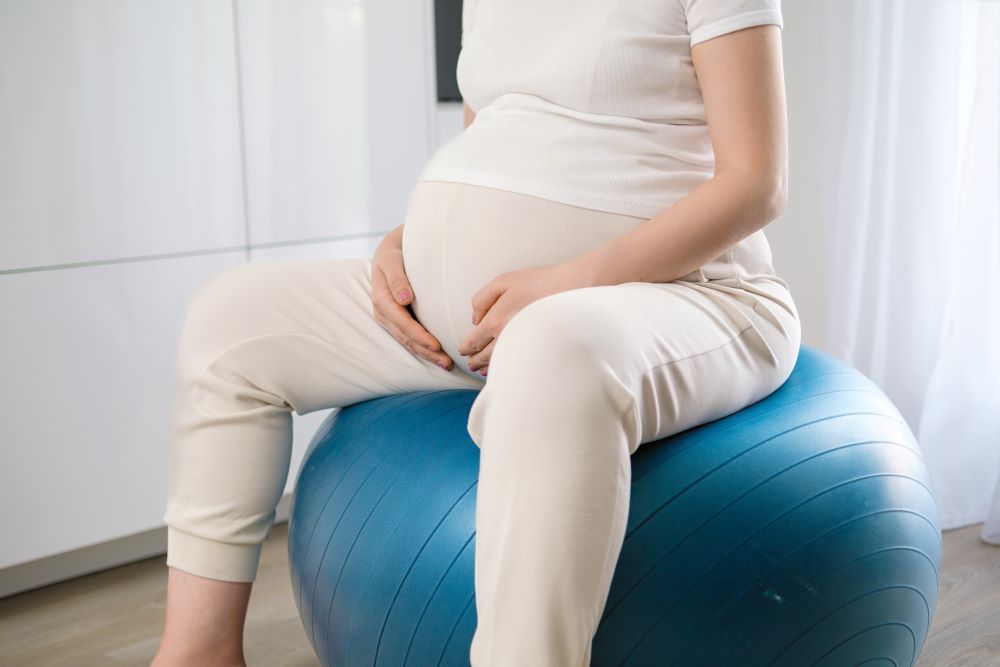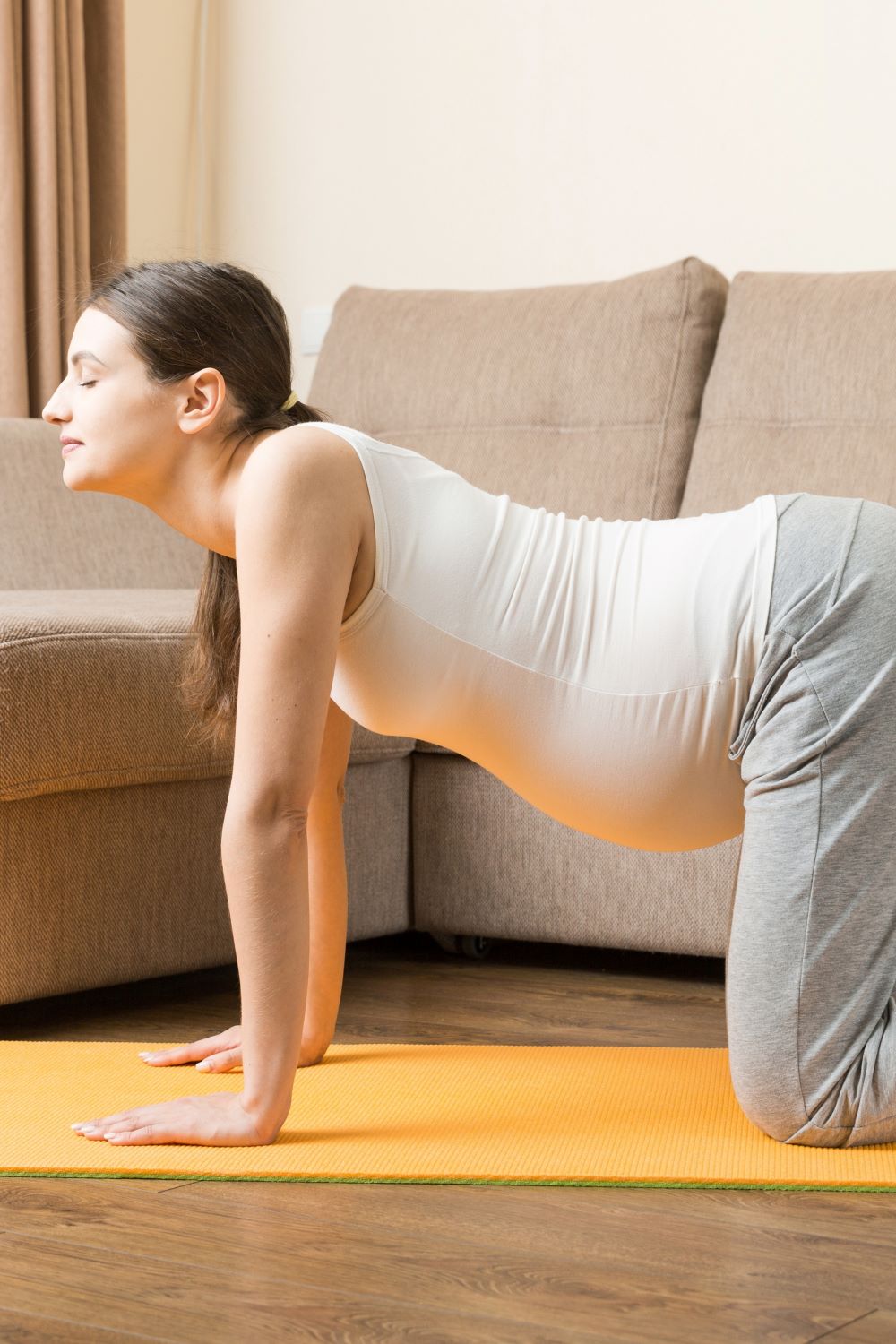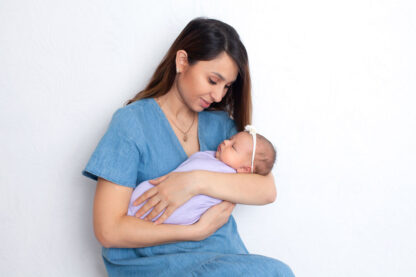Embracing Labour and Childbirth with Confidence
6 mins read
Labour and Childbirth - Journey to Motherhood
Labour is a series of continuous, progressive contractions of the uterus that help the cervix dilate and efface (thin out). This lets the foetus move through the birth canal. Labour usually starts two weeks before or after the estimated date of delivery. However, the exact trigger for the onset of labour is unknown.1
Signs of labour1
While each woman experiences labor differently, some common signs of labor may include:
• Bloody show
A small amount of mucus, slightly mixed with blood, may be expelled from the vagina.
• Contractions
Uterine muscle spasms that occur at intervals of less than 10 minutes may signify that labour has started. These may become more frequent and severe as labour progresses.
• Rupture of the amniotic sac (bag of water)
If you experience amniotic fluid gushing or leaking from your vagina, go to the hospital immediately and contact your health care provider. Most women go into labour within hours of the amniotic sac breaking. If labour does not begin soon after rupturing your amniotic sac, you will be given medications to induce your labour. This step is often taken to prevent infection and other delivery complications.
Different stages of labour1
Typically, labor is divided into three stages:
• First stage
During the onset of labour, your cervix will complete dilation. Early in this stage, you may not recognize that you are in labour if your contractions are mild and irregular. Early labour is divided into two phases:
- The latent phase is marked by strong contractions that usually occur at five- to 20-minute intervals. During this phase, your cervix will dilate approximately 3 to 4 centimeters and efface. This is usually the longest and least intense phase of labor. You may be admitted to the hospital during this phase. Your doctor will perform pelvic exams to determine the dilation of the cervix.
- The active phase is signaled by the dilation of the cervix from 4 to 10 centimeters. Your contractions will likely increase in length, severity and frequency, occurring at three- to four-minute intervals. In most cases, the active phase is shorter than the latent phase.
• Second stage
Often referred to as the pushing stage of labour, this stage starts when your cervix is completely opened and ends with the delivery of your baby. During the second stage, you become actively involved by pushing the baby through the birth canal. Crowning occurs when your baby’s head is visible at the opening of the vagina. The second stage is usually shorter than the first stage, and may take between 30 minutes and three hours for your first pregnancy.
• Third stage
After your baby is delivered, you will enter the third and final stage of labour. This stage involves the passage of the placenta (the organ that nourished your baby inside of the uterus) out of the uterus and through the vagina. The delivery of the placenta may take up to 30 minutes.
Since each labour experience is different, the amount of time required for each stage will vary. If labour induction is not required, most women will deliver their baby within 10 hours of being admitted to the hospital. Labour is generally shorter for subsequent pregnancies.
What are various types of delivery methods2
It’s hard to know exactly what will happen when you give birth. Most people have a plan in mind for how they hope their labour and delivery goes. When it comes to delivering your baby, it’s good to know there are many methods pregnancy care providers use. Types of delivery include:
• Vaginal delivery
In a vaginal birth, your baby is born through your vagina or birth canal. It’s the most preferred and most common way to deliver a baby because it carries the lowest risk (in most cases). A vaginal delivery occurs most often between weeks 37 and 42 of pregnancy. A vaginal delivery has three stages: labour, birth and delivering the placenta. Some benefits of a vaginal delivery include:
- Faster recovery
- Safest for the pregnant woman and the baby
- Lower rates of infection
- Babies are at lower risk for respiratory problems and have a stronger immune system
- Lactation and breastfeeding are usually easier
• Assisted vaginal delivery (vacuum or forceps)
An assisted vaginal delivery is when your obstetrician uses forceps or a vacuum device to get your baby out of your vagina. Assisted deliveries often happen when:
- You’ve been in labour a long time
- Your labour isn’t progressing
- You become too fatigued to continue pushing
- You or your baby are showing signs of distress
Assisted deliveries only occur when certain conditions are met.
• C-section (Caesarean birth)
During a C-section birth, your obstetrician delivers your baby through surgical incisions made in your abdomen and uterus. A C-section delivery might be planned if a medical reason calls for it, or it might be unplanned and take place during your labour if certain problems arise. Your provider may recommend a planned caesarean delivery if you:
- Had a previous C-section delivery
- Are expecting multiples
- Have placenta previa
- Have a breech baby
- Have a baby with foetal macrosomia or a large baby
- Have a uterine fibroid or other obstruction
• VBAC (vaginal birth after caesarean)
If you’ve already had a caesarean birth, you may be able to have your next baby vaginally. This is a VBAC, or vaginal birth after caesarean. Because a surgical cut results in a scar on your uterus, the concern is that the pressure of labour in a vaginal delivery could cause your uterus to open (rupture) along the previous C-section scar. For this reason, certain criteria must be met in order for your obstetrician to attempt a vaginal birth after C-section.
- Your obstetrician made a low transverse incision during your caesarean. This is the typical way to perform a C-section unless they need to deliver your baby in a hurry.
- You don’t have other uterine scars or abnormalities
- You had a prior vaginal delivery
- You haven’t had a previous uterine rupture
Pain management during labour3
Uterine muscle contractions — from pressure on your cervix, pressure of the baby on your bladder and bowels, and from the stretching of your birth canal and vagina — cause pain during labour. Pain relief options include analgesic medications, local anaesthesia, regional anaesthesia and general anaesthesia.
• Analgesic medications
Doctors inject analgesics into a vein or a muscle to dull labour discomfort. Analgesic medicines don’t completely stop pain, but they do lessen it. Because analgesic medicines affect your entire body and might make both you and your baby sleepy, they’re mainly used during early labour to help you rest and conserve your energy.
• Local anaesthesia
Local anaesthesia numbs a small area of your body like your vagina and vulva. Providers give it to you just before delivery (or when they need to give you stitches after delivery).
• Regional anaesthesia
Regional anaesthesia is the most common and effective pain relief during labour. It greatly reduces or eliminates any pain you feel below your waist. It can also be used if a C-section becomes necessary. There are three types of regional anaesthesia: spinal, epidural and combined spinal/epidural. With each type, an anaesthesiologist places medicine near the nerves in your lower back to “block” pain in a wide region of your body while you stay awake.
• General anaesthesia
General anaesthesia involves being put to sleep during delivery. It works quickly but is usually only an option for emergency C-sections or other urgent issues like excessive bleeding during delivery.
What are natural ways to ease labour pains?3
There are many ways to manage your pain during childbirth without medication. Natural childbirth typically involves no medication. Instead, people rely on breathing exercises or relaxation techniques to get them through labour and delivery. Examples of pain relievers that don’t involve medication include:
- Your obstetrician made a low transverse incision during your caesarean. This is the typical way to perform a C-section unless they need to deliver your baby in a hurry.
- Getting a massage
- Taking a warm bath or shower
- Calming or relaxing music
- Rocking on an exercise/birthing ball
- Practicing deep breathing exercises
- Meditating or using hypnosis (hypnobirthing)
- Practicing other relaxation techniques
- Acupressure
5 Effective Labour Positions4
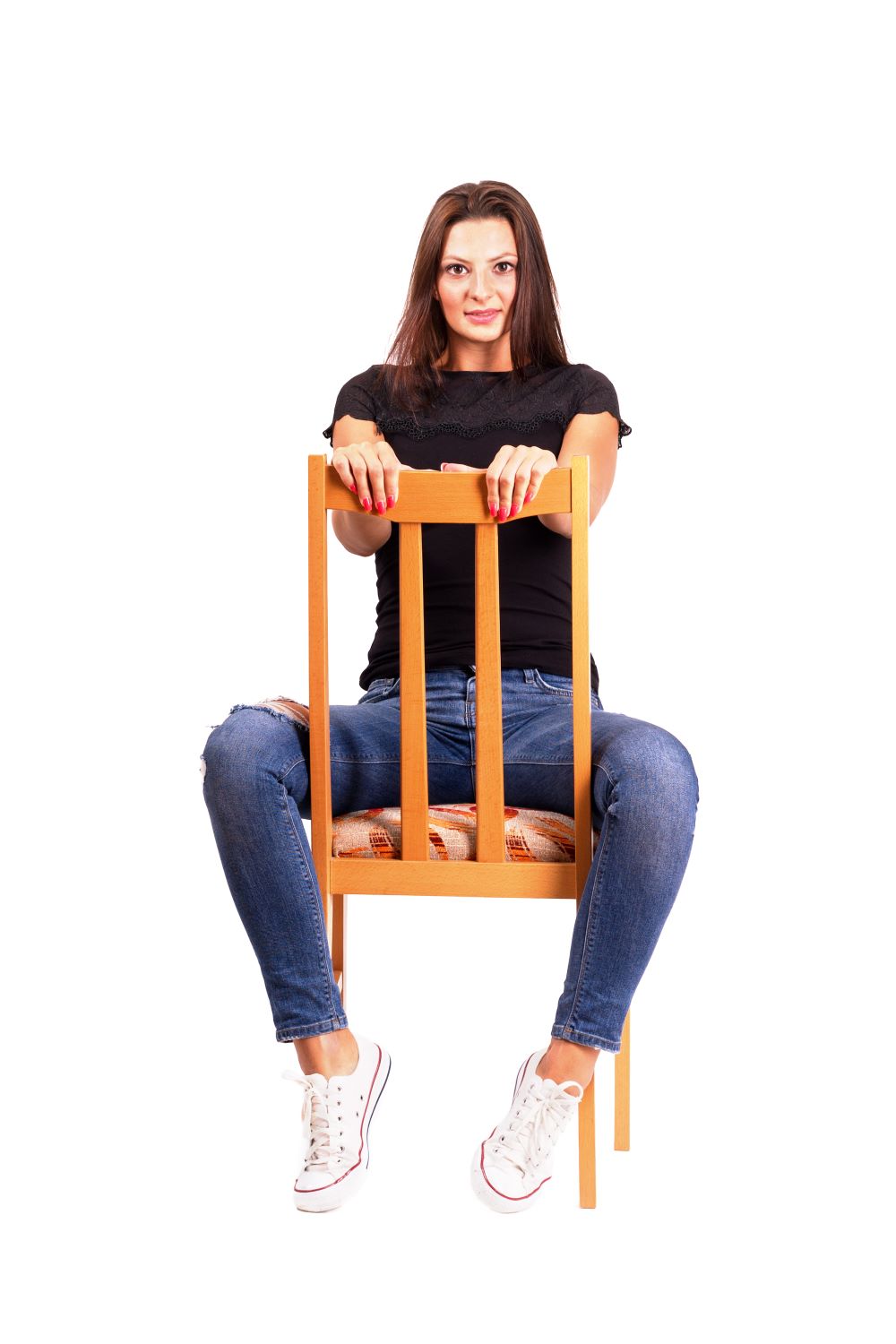
5

